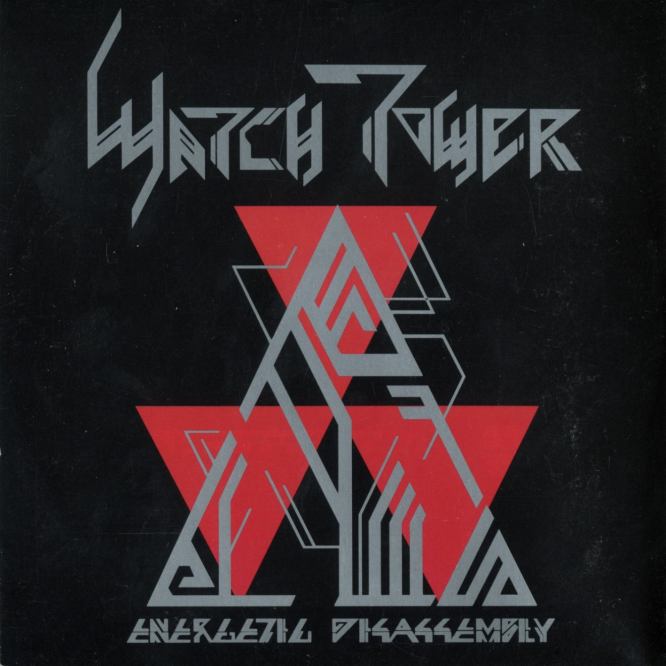The one that started it all... - 97%
One can easily claim this is the first tech-thrash album ever produced.
The year is 1985, and your average thrasher is hearing all sorts of brutal thrash starting to come at him, left right and center. Attempts at reforming Thrash at the time, usually concentrated on playing faster (Whiplash - Power & Pain), with more brutality (Possessed - Seven Churches) and more insanity ( Bathory - The Return... also see Necrodeath - The Shining Pentagram Demo with tracks such as Iconoclast is a great example, albeit rare..). This is where Watchtower steps in and says "well, wait a minute."
Jason McMaster and I quote: "In an industry of corporate cookie cutter commercial rock music with critics' high paid opinions, in super high dollar glossy magazines, the odds would certainly be against us." Indeed, they were. I mean just look at the cover of Poison's "Look What The Cat Dragged In"... holy shit. This band is Texan, and if somebody told you that bands who dub in technical-thrash/jazz/speed/metal would be easily heard at a Texas radio station at the time, somebody lied. Watchtower had to fight through the underground and rise on the lists of the "dirtsheets". Did they make it? Well, this is 2009 and I'm reviewing Energetic Disassembly, so what do you think?
What does the first attempt at technical Thrash metal sound like? To quote a magazine of the time: "imagine that Jimi Hendrix had actually joined E.L.P, and then Neil Peart and Stanley Clarke joined them and dropped the keyboards and.. ARGHHHH!" This is an actual quote - notice the frustration of the writer as he finds it difficult to describe the sound Watchtower emerged with. I'd say the music is based around a Thrash-jazz fusion with the influences of both genres being obvious especially in the structures and the insane bass. It's also highly unpredictable... the first second they're riffing along and before you know it they've dropped in a blazing solo, without a buildup, without a drum fill.
McMaster's vocal insanity is clearly influenced by the legends he has cited as an influence countless times. Namely: Rob Halford, Geddy Lee, Paul DiAnno and Bruce Dickinson. They're mostly high-pitched, whiny (a tribute to the screamers they love) and downright annoying for the people who have no tolerance for screams and falsettos.
The drummer is versatile and relatively unpredictable. Riffing is clearly on the Thrash side. It is complicated and often complimented by the Bass playing which is unusually high in the mix, unlike some other 1985 releases and at all times discernible. Thrash isn't really renowned for producing bass legends (with the possible exception of Steve DiGiorgio of the lethal SADUS), but the bassist here supports a lot of the weight of the album. The riffing is intoxicating, especially in tracks like "Asylum" and strangely enough it manages to maintain its standard of complexity without compromising any of its catchyness.
The lyrical themes revolve around important aspects and problems that seemed to concern a lot of people at the time. War, defiling of the environment, social "norms" and of course nuclear holocaust. The very title of the album is a government term for the detonation of a nuclear warhead.
The highlights of the album are probably the riffs in "Cimmerian Shadows", the riffs and solo of "Tyrants In Distress" and the headbang-fest that is "Meltdown". The top three all-round best songs on here are probably the title track, "Cimmerian Shadows" and "Asylum". But even those I fell are only just a slight notch above the rest, so do yourself a favor and get your hands on an original copy of this as soon as possible.
(Originally written for RYM)

